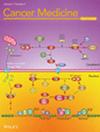circTUBD1-hnRNPK Regulates the Proliferation and Migration of LSCC by Targeting CCAR1
Abstract
Background
Laryngeal squamous cell carcinoma (LSCC) is one of the most prevalent malignancies of the head and neck region. Circular RNAs (circRNAs) have been found to exhibit abnormal expression patterns in various tumors and play pivotal roles in tumorigenesis and tumor progression.
Methods
Functional assays assessed proliferation, migration, and invasion. Mechanistic studies were performed to explore the interaction between circTUBD1 and heterogeneous nuclear ribonucleoprotein K (hnRNPK), as well as its regulation of Cell Cycle and Apoptosis Regulator 1 (CCAR1). In vivo experiments confirmed circTUBD1's role in tumor growth and metastasis.
Results
We discovered that circTUBD1 is significantly upregulated in LSCC and promotes the proliferation, invasion, and migration of LSCC cells. circTUBD1 forms a circRNA-protein complex with hnRNPK and facilitates LSCC progression by regulating CCAR1. Furthermore, in vivo experiments in mice demonstrated that silencing circTUBD1 inhibits the proliferation and metastasis of LSCC.
Conclusions
This study provides evidence that circTUBD1 is a potential tumor marker for LSCC and underscores the therapeutic potential of targeting circTUBD1 in this cancer type.


 求助内容:
求助内容: 应助结果提醒方式:
应助结果提醒方式:


